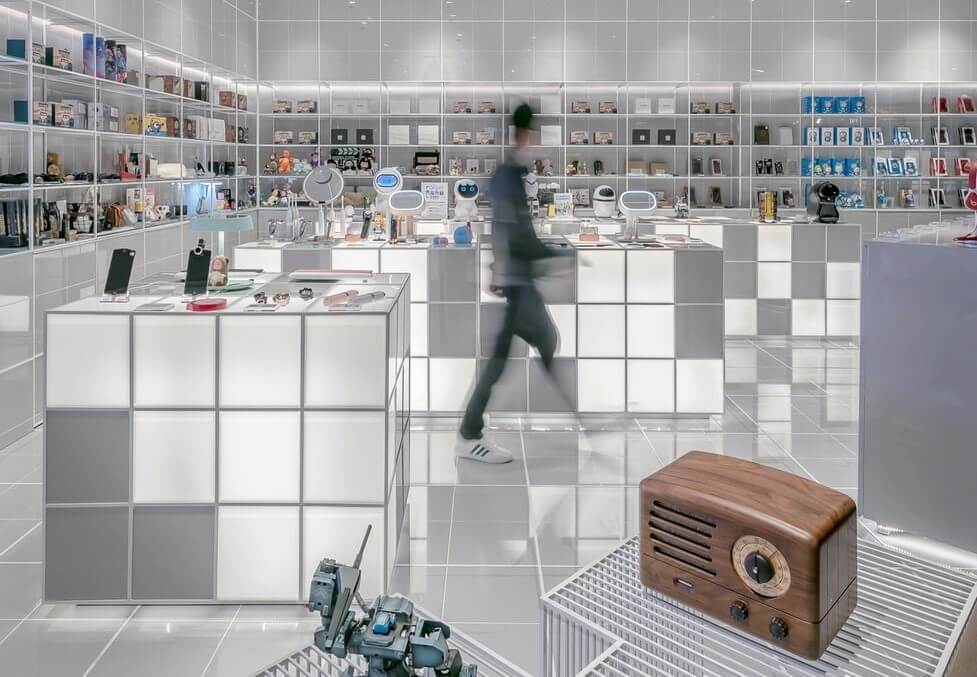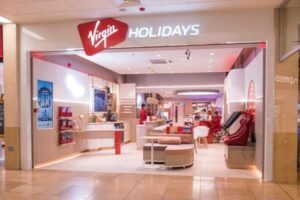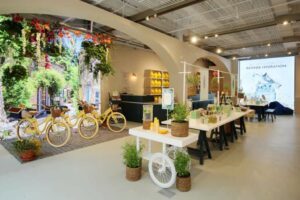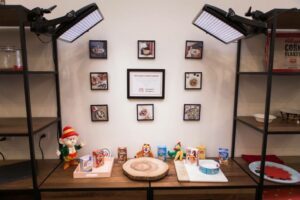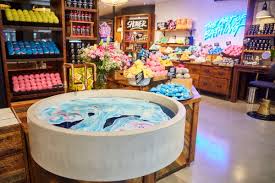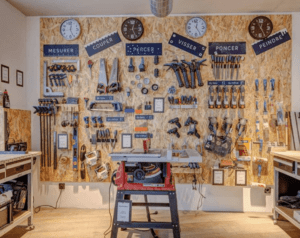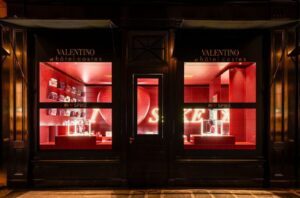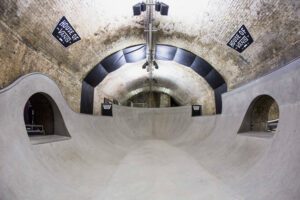At a time when product choice has become plethoric, colossally expanded by e-commerce, being a retailer no longer means simply distributing products. It's about creating the most successful consumer experience, one that engages consumers, creating an attachment to the brand that's about more than just enjoying the products. The attention paid to the quality of thecustomer experience reflects the growing importance of user-centricity , consumer at the core and direct-to-consumer phenomena, and is explained by the crucial role played by theconsumer experience in the act of purchasing.
A successful in-store experience can be achieved through a number of levers: pleasant, smiling sales assistants, skilfully stocked products, a pleasant atmosphere, personalized additional services... To give pride of place to the customer experience, Retail Design redesigns spaces and attempts to seduce from the moment you enter the store.
What is retail design?
Retail Design is a concept that combines marketing and design, invented and practiced by our Anglo-Saxon neighbors. It aims to create a universe, to transform a store into a space where furniture, decoration, lighting and product layout are designed to create an original and captivating experience. It brings together various aspects, including interior architecture, layout, design and customer flow. Retail Design is used to improve the aesthetics and understanding of products and thebrand universe by customers, whether in supermarkets, boutiques or sales counters.
Because retail design has become a widespread phenomenon, let's try to decipher the 8 main trends.
8 trends in retail design
- Digital-in-Store
In vogue for several years now, digital-in-store is becoming more streamlined, and now aims to offer an experience that sets physical stores apart from the internet. This approach is in line with the observation that consumers are more connected than ever(79% use their cell phones in their purchasing journey, according to Le Digital Post), and demanding when it comes to their experience(84% of Generation Z customers expect an interactive, personalized in-store experience, according to LSA magazine).
- Brand narrative
What could be more pleasant than walking into a store and feeling transported into a parallel universe far from the noisy streets of our daily lives? Storytelling is the cornerstone of retail design strategies, immersing consumers from the moment they enter the store to the moment they leave. Think of the reasons why your customers would want to stay in your store rather than others: this is the story you need to tell through your design.
- The Instagrammable
The Instagrammable phenomenon, named after the social network preferred by millennials, characterizes consumers' choice of experiences to share on social networks. A venue's ability to seduce through its photogenic appearance can be the source of real virality, generating increased traffic. Customers are looking for an interesting experience to live and show. With Instagram, the point of sale becomes the privileged theater of thebrand experience for the customer.
- A multi-sensory experience
What can you do in-store that you can't do online? The only significant difference lies in the sensory experience. Touching, smelling, tasting and hearing are all potential sales triggers that belong exclusively to the retail experience. Retail design is all about creating sales areas where consumers can use all their senses.
- Do It Yourself (DIY)
Since the emergence of e-commerce, the in-store experience has had to enable consumers to do much more than just buy a product. The store is becoming the preferred place for testing and experimentation. This trend, also known as " Retailtainment " (a fusion of "Retail" and "Entertainment"), aims to instill entertainment into the shopping experience.
- Pop-up stores
Another trend, well established over the last few years, is the appearance of pop-ups, which are reshaping the retail market. They are symptomatic of a Omnichannel market strategy focused on brand communication and improving the customer experience. They are often seen as a low-cost way to reach the market, as they emerge in a context of unavailable retail space, and allow new concepts to be tested without damaging the brand image if they fail. They are an ideal place to observe how retail design principles are put into practice, since they are often seductive in appearance and aim to create differentiating experiences for a brand.
- Flexible and original design spaces
There's nothing more frustrating in terms of the in-store customer experience than to enter a store every few months and find the same choice of products, the same layout, the same shelves. Merchandising had already made it possible to change product placement, create shelf headers and highlight flagship products. Retail design goes a step further, redesigning the circulation space within the store and creating an infinite number of layout possibilities thanks toflexible furnishings. One rule: make sure your customers discover something new every time they visit. One goal: to create surprise.
|
|
Another way to create a surprise is to create an original, immersive space. This is the case of the "House of Vans" in London, where music, art, BMX and street culture converge in a 2300m² building where you can go to the cinema, a concert, an art gallery, or skateboard or BMX on the top floor. This floor, dedicated to amateurs, encourages spontaneous socialization, since no reservations are possible. A good example of Retail Design, used to make the in-store visit a day to remember for the customer. |
- Putting people first
The online experience has significant advantages: speed, ease, wide choice of products. However, it lacks a crucial factor for 75% of French people (RelationClientMag 2017 survey): the human factor.
Of course, it's now possible to chat with a bot or read other customers' reviews in order to form an opinion on products... but the role of today's salesperson goes far beyond simple product advice. Thanks to technology, tedious sales tasks are now automated or automatable (ordering, stock management...) to the benefit of the customer experience. In order to make salespeople the new ambassadors of a brand's customer experience, it is necessary to train them in advance to ensure that they have all the tools and knowledge at their disposal to deliver optimal service.
Advice, testing, personalization, co-creation and sharing are the new watchwords of salespeople for a successful consumer experience.
|
In addition to rethinking spaces, decorating them and fitting them out in an attractive way, Retail Design aims to improve the customer experience through a variety of levers, from stimulating the senses and generating emotions, to providing professional and pleasant advice. To achieve experiential excellence through Retail Design, you need to pay attention to certain key principles: interactivity, originality, connectivity and reliability. Add to this a dose of the unexpected and the surprising, and you've got an in-store experience engraved in people's minds, and an experience collector's memory box. |

